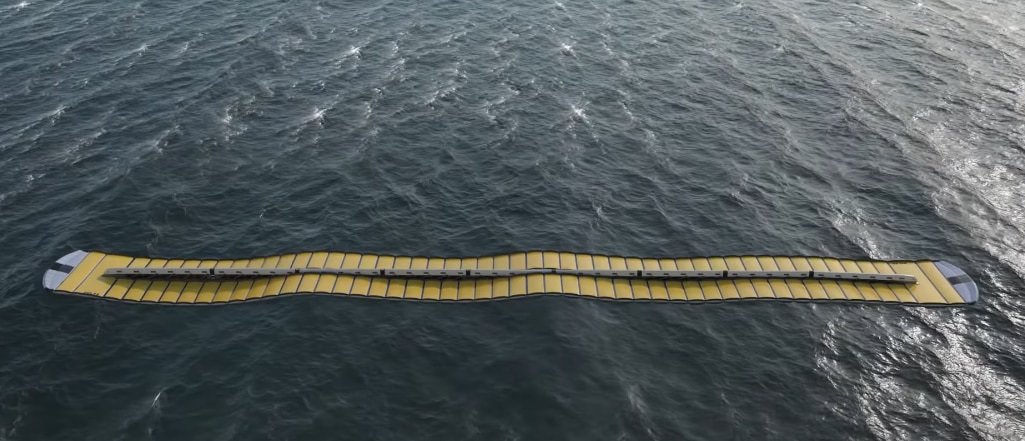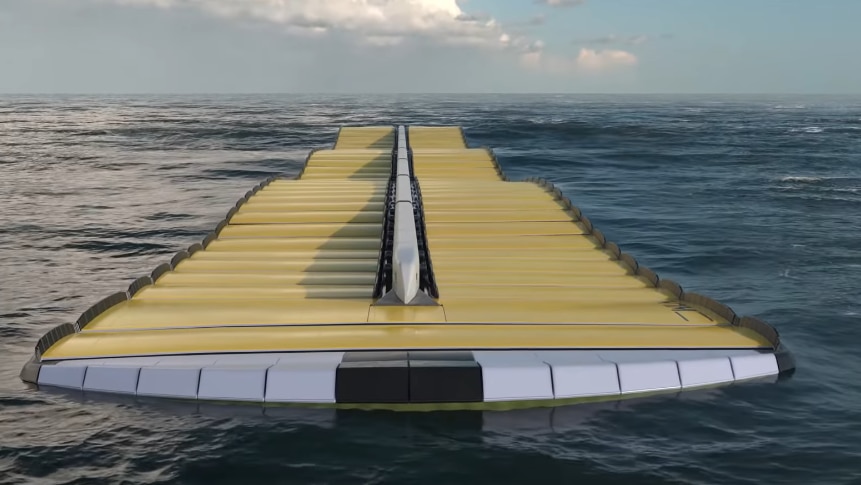
The Waveline Magnet floats on water, riding each wave to generate electricity. (Image Credit: SWEL)
Sea Wave Energy Limited (SWEL) and the UK have been developing the Waveline Magnet, a Wave Energy Converter (WEC), for the past ten years. The modular spine-like device generates electricity by floating on water and riding the waves, providing a low-cost, easy-to-maintain, and climate-friendly alternative compared to other solutions. SWEL released a concept design of the latest Waveline Magnet model in January 2022 after conducting research and tests.
“SWEL has developed and tested their devices in wave tanks and live sea environment. The R&D indicates that even in its current development state, the Waveline Magnet can produce substantial power levels at an exceptionally low cost, competing even with non-renewable sources,” the company says.

SWEL’s Wave Energy Converter has a spine-like design and can generate up to 100 MW of power under the right conditions. (Image Credit: SWEL)
The Waveline Magnet functions as a flexible device floating atop water surfaces and features several platforms connected to a central power station. Each wave interaction with the device “allows SWEL to regulate how much energy is extracted from the wave in a controlled non-disruptive manner.” Despite its size (a few centimeters thick), the lightweight WEC can survive all sorts of water environments, making it robust as well. This also means that anyone can ride on the platform without harming themselves or the device.

The lightweight and simple design makes it more affordable in terms of manufacturing and shipping costs. (Image Credit: SWEL)
The Waveline Magnet reduces expensive manufacturing and transportation costs thanks to its simplistic and lightweight design. Repairing and maintaining the WEC shouldn’t be a huge burden either since it’s developed with recyclable materials such as reinforced plastics.
According to SWEL, one WEC could generate up to 100 MW of power if it’s set in the proper conditions and forces, like Neutral Displacement Theory. Testing also revealed it harnesses more energy if it comes across a bigger wave. “A raw mechanical power output down to 1p/kWh, crushing the wave industry reference value, putting the technology in its full capability on par with fossil fuels. SWEL claims that a single ‘Waveline Magnet’ device, scaled to suit the wave climate at EMEC, would satisfy more than the hub’s current grid-connection capabilities,” the team says.
SWEL’s next step involves commercializing and mass-producing the technology. Before that happens, it must undergo further testing to improve the spine-like device.
Have a story tip? Message me at: http://twitter.com/Cabe_Atwell
